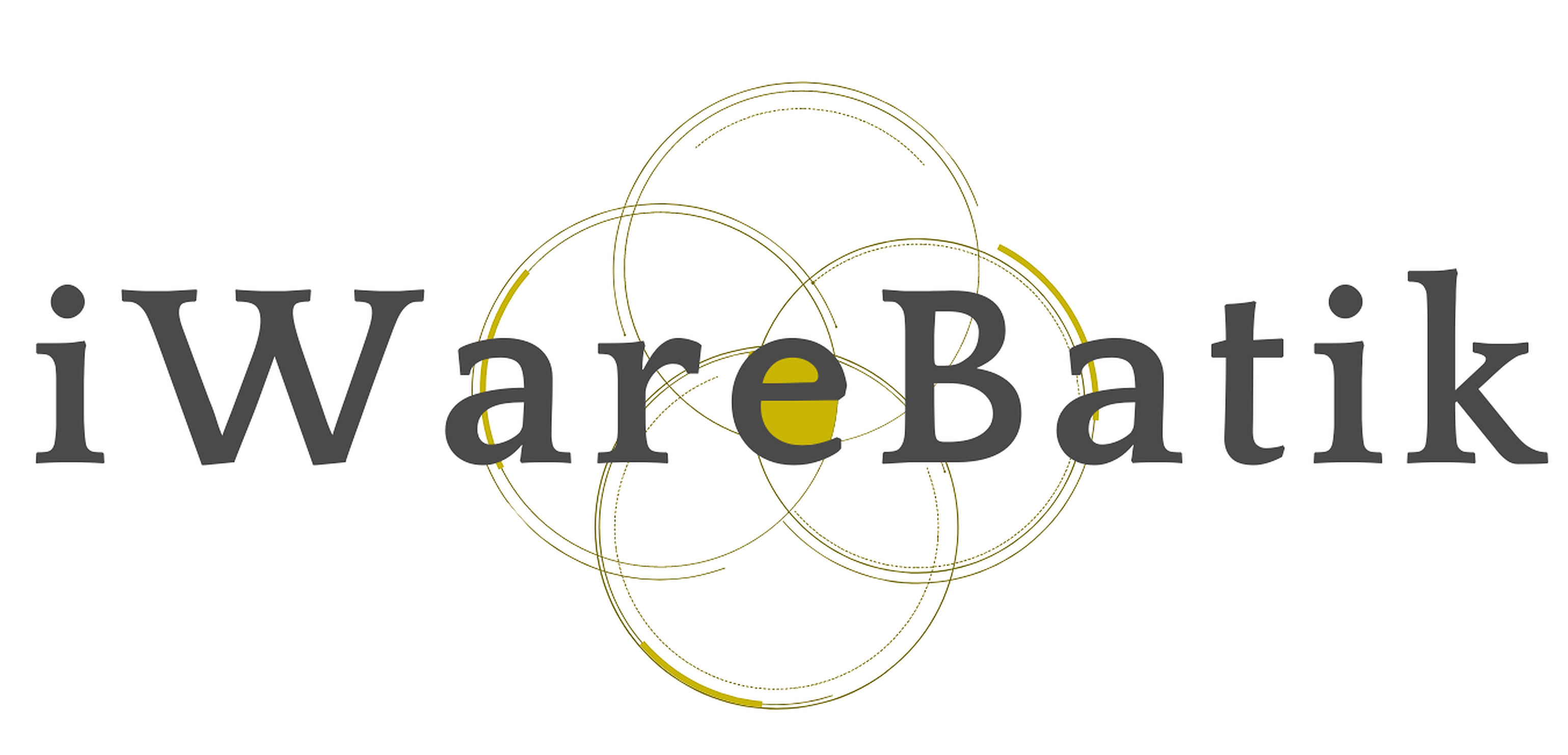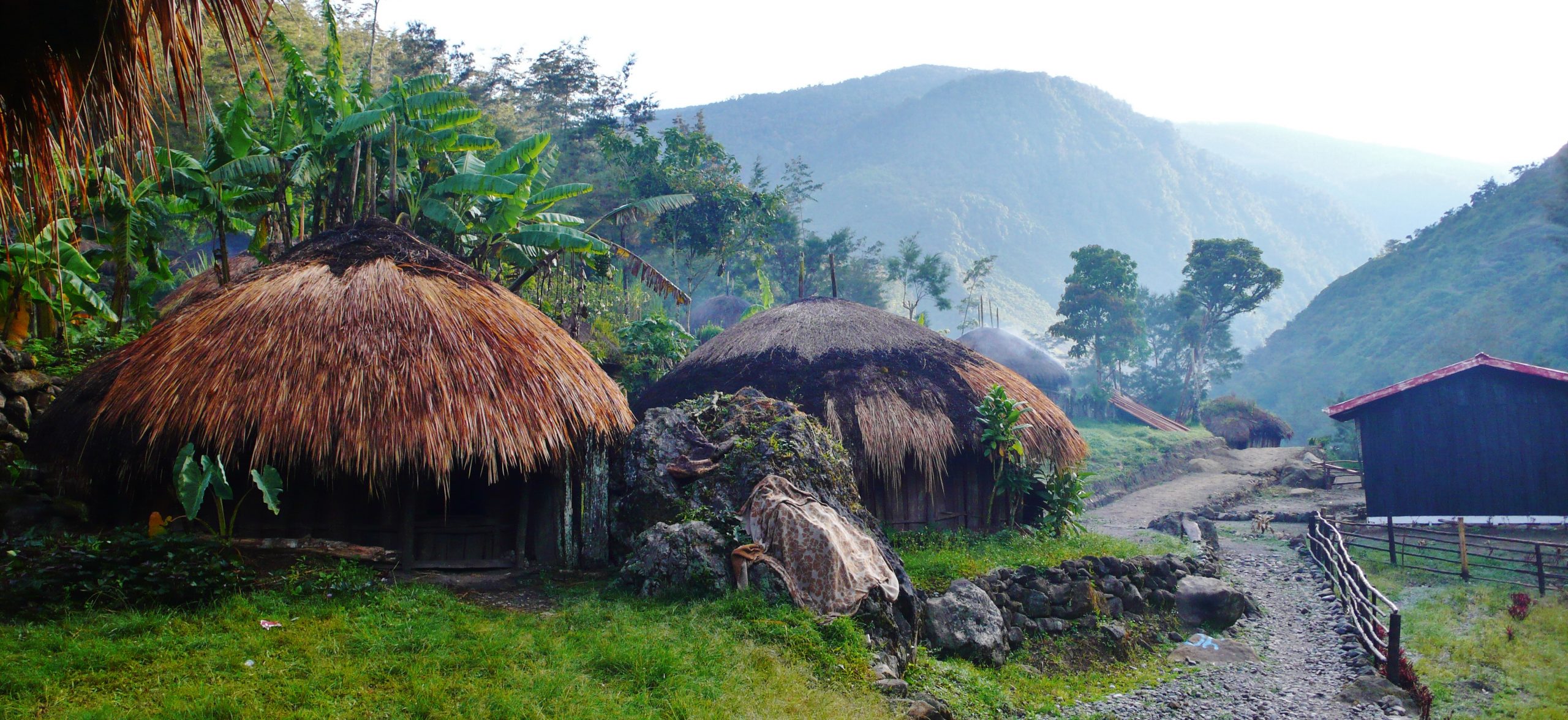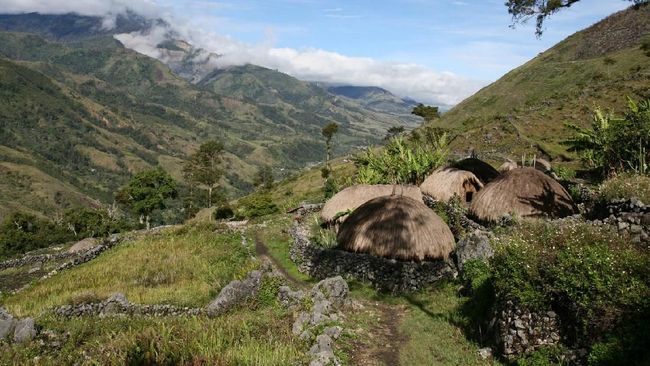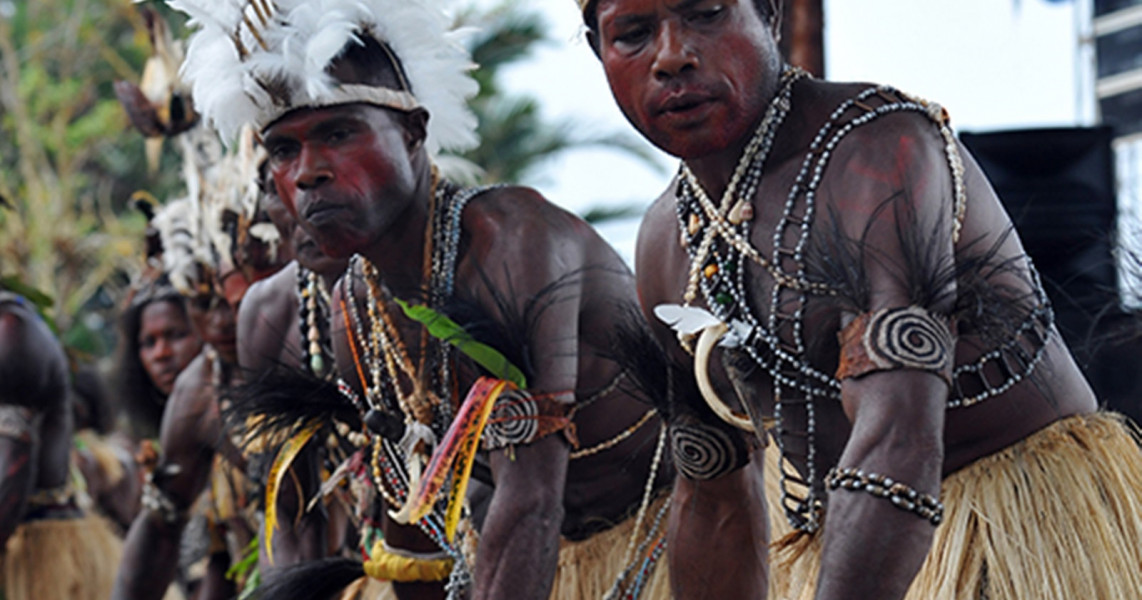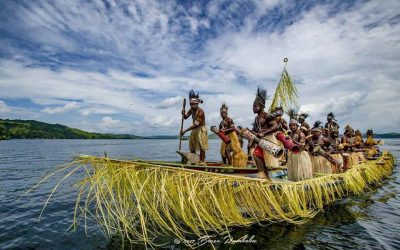Home / Batik Regions – Eastern Indonesia – Papua / Baliem Valley
Cultural Destination
Embrace the spirit of the place!
Baliem Valley
Honai Traditional Houses in Baliem Valley, Papua (photo: @Philomène Martinelli/Wikipedia)
Baliem Valley, Papua (photo: @Detik.net)
Local Communities in Baliem Valley, Papua (photo: @Pesona Indonesia)
Baliem Valley
Apart from the breathtaking view you can enjoy here, Baliem Valley is the house of many tribes such as Lani, Yali and Dani. These tribes usually hold a dance performance called “the war dance” which is not a real war. Behind this performance there is an ancient philosophy stating that “your tomorrow must be better than your present”.
Cultural Tourism Destination
Baliem Valley
Tourist Attractions in Papua
Sentani Lake Festival
If you happen to be here around June 19th, you should definitely take part in
Harlem Beach
Papua also means stunning beach places. Harlem Beach is one of them.
Papua
Batik Motifs
Ukir Sentani
The Ukir motif is a batik motif that is inspired by various traditional Sentani wood carvings
Discover
Indonesian
Batik
Motifs
Pohon Hayat (Tree of Life)
The Batik motifs in Lampung are dominated by the acculturation of Buddhist and
Karawo Mahkuta
Mahkuta refers to Gorontalo’s traditional crown. It represents noble characters of
Gonggong Siput
Gonggong (Strombus Turturella) is one type of sea snail found around
Tengkawang Ampiek
With its many advantages, the Dayaks use this leaf in ritual ceremonies. This plant is a symbol of
Besurek Rafflesia
The term “Basurek” refers to a textile that contains letters or inscriptions
Bekantan Pakis
This motif represents Pakis Haji (Polystichum setiferum), an endemic plant in
Parang Rusak
Another meaning behind this motif is an unconquerable spirit, symbolized by
Dayak Taghol
Dayak Taghol has a distinctive style of four curved lines and small dots. This motif represents
Kaganga Tanah Rejang
If Batik Besurek combines Arabic calligraphy motifs, then the Kaganga batik takes
Mahkota Siger
Siger is the crown of a noblewoman in ancient time. It is a symbol of femininity, strength, and
Cengkeh
The clove flower motif is the main commodity of the Tolitoli Regency. This motif represents
Sekar Jati
Sekar means flower and Jati refers to teak trees that symbolizes a strong mental character that
Bultiya
The word ‘Bultiya’ is an acronym of the three major tribes in North Kalimantan, namely
Sido Mulyo
Sidomulyo is one of the classical motifs, which is specifically used for the bride’s costume in
Buketan Bali
The Balinese bouquet (Buketan Bali) is a floral arrangement and the name is
Srimanganti
The name of the Srimanganti motif is derived from Palace’s hallway that connects to
Ukir Sentani
The Ukir motif is a batik motif that is inspired by various traditional Sentani wood carvings
Malinau Cultural Festival
You will witness a unique competition that might not be found other than in
Gajah Way Kambas
The motif illustrates the Lampung’s natural reserve, the Way Kambas. it also symbolizes
Sandeq
Sandeq Boat is a symbol of the maritime importance of the West Sulawesi region. The greatness of
Pattimura
Pattimura is the name of an Indonesian hero who fought against colonialism in
Tikar Natuna
The Tikar Natuna motif is adapted from the traditional making of pandanus mats in
Raja Ampat
Raja Ampat motif represents the marine life at Raja Ampat archipelago in
Sekomandi
Its philosophical meaning is the eternal union which refers to a saying “until death do us part”
Tubo Kelapa
Coconut tree is a symbol of a good character and strong mentality. It illustrates the more success a person, the more
Taiganja
Taiganja is a precious gold pendant that shows the social status of the Kaili family. It is
Insang Ikan
Insang refers to the gills of the fish. This is a typical pattern of Malay ethnic who inhabits
Durian Pecah
Broken Durian motifs depict the foundation of faith. The second half signifies the mastery of
Lontara
The Lontara script itself is a typical ancient script of Bugis and Makassar communities. History records that
Biji Kopi
The coffee seeds motif illustrates the pride of local coffee specialities in
Daun Sirih
This motif illustrates betel leaves that are used by Lombok communities as traditional
Manguni Minahasa
Manguni is identified as the symbol of the Minahasa people. Manguni is known as a
Pati-Pati Pinehiku
It symbolizes the hierarchy in society and the social status of the Mekongga
Karawo Pinang
Pinang refers to the Palm areca tree. This motif is considered as the original
Besurek Rembulan
This batik illustrates praise for God who created the wonderful universe
Lipaq Sabe
Lipaq Saqbe contains a simple geometric classical motif with various flower decorations. This textile is
Kawung
The Kawung motif was created by Sultan Agung Hanyokrokusumo (1593 – 1645) as a symbolic gift for
Kain Cual
Cual textile tradition has existed since the 17th century. The word “Cual” refers to
Bomba Mawar
This motif means sacred love for family, kingdom, and God; It also illustrates
Parang Seling
Parang Seling or “alternating daggers” is a royal batik motif. It is a feminine variant of
Paqbarre Allo
The word “Barre” means round and “Allo” means the sunlight. This motif is interpreted as
Singayaksa
The Singayaksa motif comes from the name of a place where Sultan Hasanuddin used to
Kerawang Tegak Aceh
The Vertical Upright (Kerawang Tegak) Motif symbolizes a person who has a strong
Tenun Bima
The motifs are adopted from Bima woven textile. This pattern has received a great
Enggang Dayak
Local people beliefs that hornbills are an incarnation of the Commander of the Birds. It has supernatural
Gentala Arasy
Built as high as 80 meters, the tower also highlights the historical side of
Daun Lada Hitam
The black pepper motif represents the main commodity of Bangka Belitung
Wirasat
Wirasat or divine inspiration is a gift from God. This inspiration is symbolized by
Tampuk Manggis Sasirangan
The motif illustrates the philosophy of the mangosteen fruit, which is
Daun Simpor
This motif is inspired by the Simpor plant (Dillenia Suffruticosa) which is a typical
Honai
The Honai is inspired by the traditional house of the Papuan community living in
Kaharingan
The Kaharingan or ‘tree of life’ based on the Dayak tribes’ belief system. This tree symbolizes
Ake Patra
Ake is related to the divinity and the composition of the universe. It is a symbol of
Jupri Kembang Teh
Kembang Teh illustrates the tendrils of tea plants that grow in the highlands of
Desa Na Tolu
The Desa Na Tolu characteristic pattern symbolizes the Batak philosophy of existence and
Pinawetengan
The Pinawetengan Batik pattern was taken from a prehistoric inscription in
Pucuk Rebung Riau
Pucuk Rebung symbolizes heart determination in achieving goals, good luck, and
Teguh Bersatu
This batik motif shows the strength of the people of Kupang. It also represents a sense of
Burung Bidadari
Bidadari birds are endemic birds in Halmahera. This motif represents an
Salakanagara
Salakanagara batik motif illustrates the first kingdom in the Betawi land
Keluak Daun Pakis
The word “Keluak” is a Minang language which means twisted or tangled. The Motif of
Gamolan
This motif illustrates Gamolan, a bamboo musical instrument of Lampung that is
Ikan tambal
The word “Ikan” refers to fish. The philosophical meaning of Ikan Tambal means is
Tifa Totobuang
The batik motifs illustrate Maluku’s traditional music instrument called
Gorga Simeol-Meol
The Gorga Simeol-meol is a pattern of plant tendrils. it is regarded as a symbol of longevity and
Sero Tangga
The Sero Tangga illustrates an endearing feeling and sacrifices of a person to fulfil
Pala Salawaku
This motif illustrates the unique weapons of the Maluku region, namely
Tangerang Herang
Tangerang Herang motif is a symbol of Tangerang city. The Tangerang Herang batik motif consists of
Tanah Liek
The word “Tanah Liek” refers to clay in Minang language. It is also known as
Kuda Kupang
Horses symbolize wealth. It contains noble values of virtuous characters that bring
Gedhog Kembang Waluh
a combination of Javanese cultural motif of the Majapahit kingdom (XII-XIV century) with
Bale Lumbu
This motif signifies the welfare of the ancient Sasak society. Bale also symbolizes the
